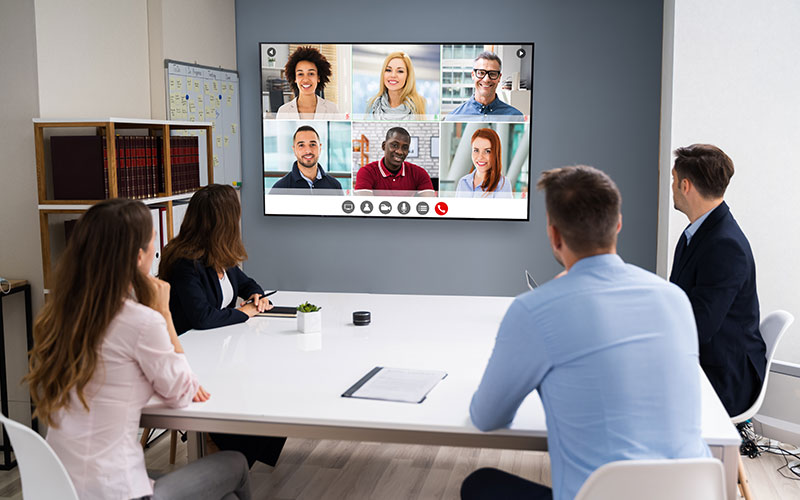
For the better part of a year, we’ve changed the where, when, and how of our working and collaboration habits as the world adjusts to social distancing and remote work.
Over the last seven or eight months, we’ve moved our workflow to collaboration platforms like Microsoft Teams, Zoom, Google Meet, Webex and others, and we’ve become familiar with the display hardware that can make using those platforms even easier and more productive.
However, this remote workforce won’t continue – at least not at these numbers – once COVID-19 is behind us and no longer a driving force behind new collaboration technology.
While we’ll retain some of these habits and bring some of this technology back into the office when we return, we’ll also move beyond these tools and look for other technologies that can help us do our jobs in a more stable and safe work environment.
Dana Corey, senior vice president and general manager at collaboration display company Avocor, in an interview with Commercial Integrator said now that we know what tools a dispersed workforce needs to collaborate, the challenge becomes how to equip remote workers with those tools.
“I think the tools that we already have in place for the office are there,” Corey says. “The question really comes down to ‘Who is going to stay home, and over the next year, what tools do they need?’”
What’s become clear over the last few months is that built-in microphones and cameras on our endpoint devices like laptops and tablets aren’t nearly good enough to rely on for important meetings.
That’s given rise to a number of new collaboration displays, including three new 55-inch displays from Avocor, Zoom for Home devices and other products and integrations that allow for remote collaboration.
The business world has made it clear that a complete and total return to the office isn’t likely because employees generally like the flexibility that remote or hybrid work provides.
That means these collaboration displays won’t go out of style, and they will become an even larger part of our office experience, Corey says.
These hardware innovations are coupled with a quick rush to upgrade that improve the collaboration platforms on which these devices run.
Zoom, Microsoft, Google, Cisco and a host of other videoconferencing and unified communication software providers have announced dozens of new features and integrations over the last few months aimed at helping a dispersed workforce stay connected.
The space is becoming more competitive, and these providers are now forced to come up with solutions for the next phase of the corporate response to COVID-19.
“I think we’ll really start seeing the guns come out by these players showing more, which means they’re going to have to bring more to the table to make the category stronger,” Corey says.
With enterprises demanding this kind of collaboration technology, both end users and system integrators will need to look heavily at platforms that do more than just video and web conferencing.
“The video only, the single platform could be at risk,” Corey says.
IT directors that only planned to have a single platform for all of their company’s conferencing needs, you might be in trouble.
User demands due to new product features and enhancements in the collaboration market could make your existing single-platform application nearly useless.
Zoom and Microsoft Teams have dominated headlines about the collaboration market, but other players like Google’s Meet and Cisco’s Webex aren’t just sitting idly by. In fact, both of those examples have actively releasing new features and upgrading platforms.
Meanwhile, a variety of startups are entering the market, and other tech companies like Facebook are entering the video collaboration space for the first time.
Organizations now need to plan for platform-agnostic collaboration for both their remote work operations and in their physical meeting spaces.
“If I can’t switch to something else or another application the company wants, I could be in trouble because I didn’t provide a platform that the company could fall back on,” Corey says. “Agnostic systems let you ebb and flow with the market.”
Original article from Commercial Integrator
Keep up to date with all the latest from Avocor and partners and get information on upcoming events and exciting product news.
Speak to one of our product specialists and find the perfect solution for you.